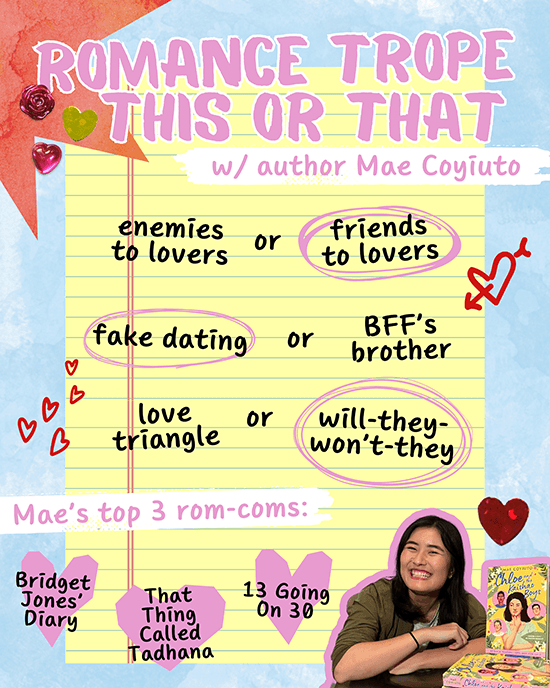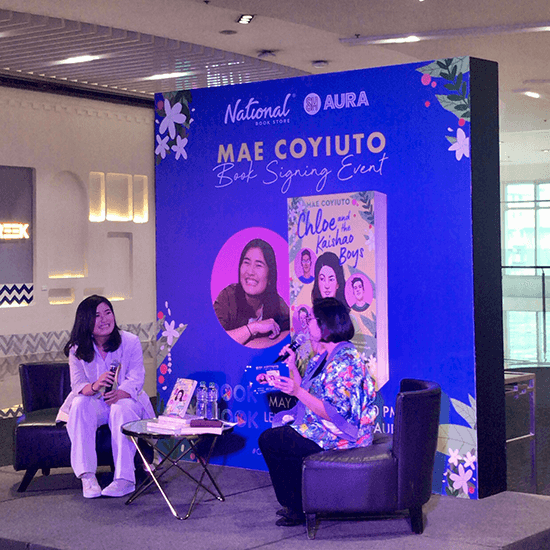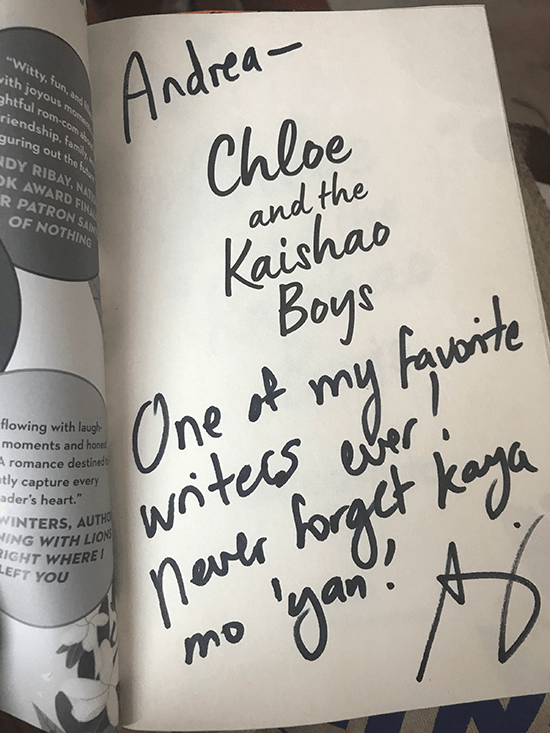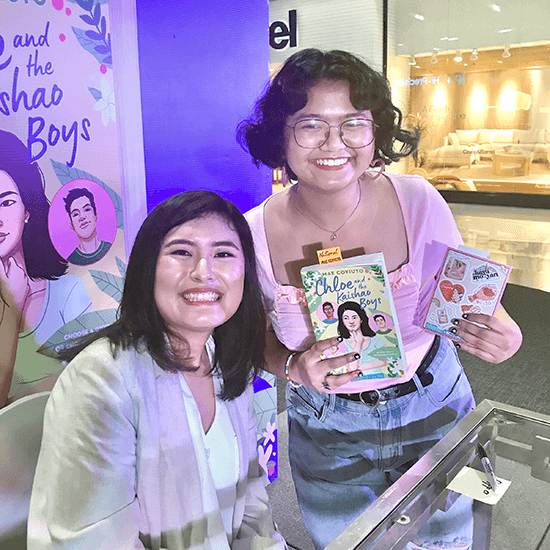I want to live in a Mae Coyiuto love story
I feel intense bouts of cringe when I remember I spent most of my 23 years denouncing romance. As a young girl, I feared belittlement for wanting love like in the movies; all the while being weighed down by the knowledge that, culturally, my life would be deemed incomplete without it.
When I read Chloe and the Kaishao Boys, Mae Coyiuto’s young adult rom-com novel about a 17-year-old Chinese Filipino living in Manila, I was exposed to nerve endings. Chloe, dreaming of studying animation abroad, gets set up on a marathon of arranged dates—or Kaishao-ed, which is Hokkien for “to introduce”—as her relatives attempt to get her to stay in the Philippines for college.
Giggles were inevitable as Chloe goes on awkward first date after awkward first date. I took pictures of so many quotes and scenes, sending them to my friends with the caption, “Remember when you used to like…”

Imagine, too, the pure joy of reading a rom-com set in Manila starring Filipino characters. It was healing for my inner child who inserted herself in rom-coms she watched in secret—who, like Chloe, went to many school fairs headlined by folk-pop band Ben&Ben.
But Chloe and the Kaishao Boys is not just good because of its relatability, though it definitely plays a part. It’s good because author Coyiuto has such a deep, empathetic understanding of the teenage condition—this is most apparent in her thoughtfully drawn characters, where both teenagers and their parents are given the same degree of complexity.

Though Chloe is indeed relatable and local, it carries universal themes about family, friendship, pursuing your passions, and a message from Chloe’s father that everyone deserves to hear: “Never forget, kaya mo ‘yan.”
I caught up with Mae, who was Young STAR’s brilliant editor until last year, to talk kilig, romance tropes, and making a Filipino book for a global audience—Chloe is the first YA title published by Penguin Random House US by an author based in the Philippines.

YOUNG STAR: There are three “Kaishao boys” that Chloe gets set up with. How did you figure out their roles and how they will be formative in Chloe’s growth?
MAE COYIUTO: It took a while to get an editor interested in the story. When I got my first round of no’s, I was contemplating how to revise it, then I got the idea of: what if she gets set up with her best friend’s brother, her best friend’s boyfriend, and her high school crush? Like all these tropes we’ve seen before.
As for Chloe’s growth, the best (love stories) for me are when two people help each other grow. I was always asking, how does Chloe grow from this friendship or relationship, and how does the guy also grow with her?

There are a lot of kilig moments throughout the book. Chloe’s high school crush calling her “Chloe Elaine,” for example, is such a good, true-to-life detail. I’m very curious about the mechanics of kilig—how did you conjure it for the blank page? How did you go about writing those kilig moments?
Honestly, it takes a lot of revising din. I think it’s predictable who she ends up with when you start reading it, but I also wanted that big moment when they get together or when they confess to each other. Just like mystery plots or adventure plots, with romance, you have to hit that climax, too — that moment where you get the most kilig in the story. I don’t know if there’s one way to write kilig (but) it’s important for me that all these moments feel earned. I wanted you to see why this guy would be interested in Chloe.
Yeah, the characters are such complete people that when they get together you see that, oo nga ‘no, they would be good together. That’s why it works din kasi they feel like your friends. The book is also very Filipino. Were you pulling from real life, maybe the stories of your friends or your own experiences, or from local movies?
I used to be super conscious that I had to come up with something that hasn’t been done before. What’s so cool about writing this book was that stories about matchmaking, about falling for your best friend’s brother, they’ve been (done before), but I got to put a (Filipino) spin on them. I think anyone who went to high school with me can tell that the details came from our own high school life—what would a love story set in a high school similar to mine look like?

I had some trouble because I was worried about making the story accessible to people abroad and also authentic to people here. I think I just learned to prioritize people from here since that’s what the book is supposed to represent. I’m just really lucky na I didn’t get much pushback from my editor and publisher abroad even though there was very specific stuff in this book.
What’s your favorite romance trope?
Before, I thought I was into “enemies to lovers,” but now I’m more into “friends to lovers.” I like it din when two people bring out the best of each other. Also, halata naman na I love YA romances and stories set in high school. I feel like, because everything is experienced for the first time, everything’s so intense. It’s nice to write and read about.


